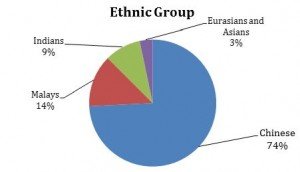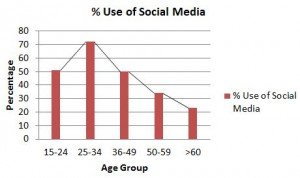In 1959 Singapore attained its full government and election was won by People Action Party whose leader Lee Kuan Yew became the first Prime Minister of Singapore. Lee Kuan Yew was the world’s first country Marketing Director who built “Singapore”as a brand. According to United Nations Human Development Index (UNHD) 2014, ranks Singapore as 9 out of 187 countries with feeling of belonging, vibrant culture, racial harmony, strong ethic and ethnic tolerance. Throughout the world it is famous as holiday, shopping, business and living destination. Due to its cosmopolitan culture it has evolved and grown like no other nation in the world. The majority of the population is dominated by Chinese following by Malays and Indians (contactsingapore.sg).

Singapore has seen change in the trends of consumers in last few years, it can be due to various reasons, few of them can be named as influx of expatriates which creates competition for Singaporeans, increasing spent on tuition fees of children, and increase in e-shoppers which include clothes, airline and cinema tickets, books and gadgets, online grocery shopping (Euromonitor, 2014). Also Singaporeans love to travel, dine out, and donate in charities while enjoying weekends luxuriously.

Profiling of Singaporeans:
Infants and Kids:
Parents of these infants and kids are sending their children to enrichment centers from the early age as they believe to develop them emotionally and culturally it is very essential for them where they learn both English and Mandarin as language and they themselves attend parental programs and visit parental websites. Also they have this perception that better the enrichment centers better will be the school in which their child will start his/her education. The uniqueness for this segment doesn’t stop here even baby spa, gym, swimming, yoga, brain training in form of “Shichida”classes is very popular in Singapore.
For kids in the age group of 3-8 years tuition classes are another business which has seen growth. Not only these toys, DVD’s and books are the most selling products for this segment and Singapore Mummy Facebook Page is creating a lot of buzz for such products in the market.
Generation Z (8-19)
This segment of consumers is exposed to mobile phones and they make most use or misuse of it depends upon the marketer who wants to use this information. These teenagers top interest’s lies in music, computers and movies. As Singapore has high household broadband penetration they remain involved in messaging, video games all time. Facebook is most popular social media for this segment of users followed by Twitter, YouTube,LinkedIn and Pinterest. But it is interesting to know that aged 17-19 join Linked in account for professional purpose. They also suffer from blood pressure and sugar problems, due to inactive participation in sports where companies can surely target and leverage by promoting healthier lifestyle as it can turn out to be a big gap in economic progress.
Generation Y (20-30)
For this segment it is interesting to know that males have to serve compulsory 2 year military service where female enter higher education or work. Another interesting trend which can be seen is according to Kelly Global Workforce Index younger Singaporeans were switching jobs to find positions that could give them personal growth (41%) and personal fulfillment (29%).
They generally spent on fashion, food and cuisines, entertainment. They prefer foreign brands for all these and specifically for clothes they prefer going to brick mortar store, try the outfit and order online. Skin care is another segment where Generation Y is most loyal in Singapore. They prefer organic and herbal cosmetics along with mass and premium range of products in the market. Society, recommendations from friends and families influences their buying dimensions to greater extent.
Generation X (31-45)
This generation is kind of sandwich generation who are between their parents and children taking care of both segments simultaneously. Though their interest lies in luxurious items, entertainment and better dine out areas. For them their career is also important thus they focus on improving interpersonal skills, technical knowledge as well as use social media widely. Employees are willing to spend money on all these developments and searching for better options to upgrade themselves.
Baby Boomers (46-64)
This segment in Singapore is called the happiest segment as they are happy with whatever they have achieved; happy with the family and the kind of life they live. Before making any purchase their normal trend is to seek recommendation from family and friends. Activities in which they like to involve themselves vary from cooking to shopping. They love reading, cycling, surfing net and travelling to various destinations of the world. This segment of consumers has urge to learn IT and cooking skills for news, interesting places, activities, shopping etc.
Apart from the above mentioned, the prestigious Hawker centers are somewhere loosing charm in Singapore due to problem of hygiene factors. Raw food is slowly taking place of other fast food options along with Chinese tea which is claimed as coffee of Singapore.
Now it’s time for companies to utilize this opportunity and expand their horizon to the untouched segments of Singapore – trend is changing you just need to get most out of it!
Tags: consumer demography singapore
You might like reading:
Optimizing Digital Customer Experience through Digital Marketing
At present time if any company doesn’t have its website up to date or it is not engaging itself in Search Engine Optimization, any Search Engine Marketing strategy or Content Marketing then it may lack behind in this pace to reach to consumer’s mind. As many companies are buying into the hype of various buzz words whatever they see on […]

Analysis of Aviation sector
Overview The Indian Aviation industry is the 9th largest civil aviation market in the world and is ranked 4th globally in domestic passenger volumes. The industry handles about 2.5 billion passengers annually and has about 87 different airlines flying to & from India. Some facts and figures with respect to the aviation industry:- Total Passenger Traffic in FY12 – […]
































Loved the way you have profiled the segments ! great work 🙂